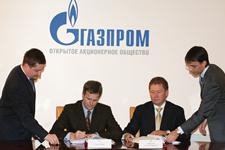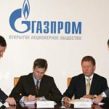
Shtokman Project’s Postponement Marks Turning Point in Russia-West Energy Trade
Publication: Eurasia Daily Monitor Volume: 7 Issue: 28
By:

(Part Two)
Shtokman is the most ambitious energy project in Russia since the end of the Soviet era. A joint venture of Gazprom with Total of France and Norway’s Statoil, the Shtokman project is entirely export-oriented toward Europe and the United States. The February 5 decision to delay this project by several years, and its bleak outlook beyond the declared postponement (EDM, February 9), marks a turning point in the Russia-West energy trade.
This field, one of the world’s richest, is estimated by Russian authorities to contain 3.8 trillion cubic meters of gas (how much of it would be commercially viable on cost calculation remains uncertain). The field is situated within the Arctic Circle in the Russian sector of the Barents Sea, in water depths of 320 to 340 meters, some 500 to 600 kilometers offshore, northward from the Kola Peninsula.
The Shtokman Development Company is in charge of this project, with a 25-year lifetime from the time of commissioning field work, now substantially postponed (EDM, February 9). This project is dubbed First Phase, although no specific planning has been reported for a second phase (www.barentsobservber.com).
The company includes Gazprom’s fully-owned subsidiary Sevmorneftegaz with a 51 percent stake, Total of France with 25 percent, and Norway’s Statoil with 24 percent. Investment costs are roughly estimated at $15 billion to $20 billion by most Western observers; and at $12 billion by Gazprom.
Phase One was expected to produce some 23 billion cubic meters (bcm) of gas annually from 2013 onward, for export through pipelines. It was additionally expected to produce gas volumes for processing into liquefied gas, at a rate of 7.5 million tons of LNG annually, from 2014 onward, at an LNG plant to be built onshore on the Kola Peninsula. Gazprom claimed that Shtokman’s overall production could peak at 70 bcm and even up to 95 bcm annually (Dow Jones, July 21, 2009).
Exports by pipeline were presumed (though without official confirmation) to be destined at least in part for supplying the second stage of Gazprom’s Nord Stream pipeline on the Baltic seabed, bound for Germany. LNG exports from Shtokman were clearly earmarked for delivery to the United States by Gazprom.
The structure of the Shtokman Development Company differs markedly from the standard form of an owners’ consortium. Sevmorneftegaz is sole holder of the exploration and production license for the Shtokman field and marketing rights of the hydrocarbons extracted there. The Development Company would own and operates the field infrastructure during the 25-year lifetime (from the field work’s commissioning) of Phase One. After that term, the entire infrastructure (platforms and other production installations, pipelines, the LNG plant) would be transferred to Sevmorneftegaz; while Total and Statoil would transfer their shares in the Shtokman Development Company to Gazprom.
The Russian government awarded the Shtokman license to Gazprom’s Sevmorneftegaz in 2002. Plans changed several times before Gazprom signed bilateral agreements in 2007 with Total and Statoil, respectively. The Shtokman Development Company was established in February 2008, under Gazprom’s board member Yuri Komarov as the chief executive of this project. Nominally headquartered in Zug, Switzerland, the venture is supervised from Gazprom’s Moscow office. Decisions are taken jointly, but are announced by Gazprom on the partners’ collective behalf.
A number of leading Western companies had competed to be short-listed by Moscow for Shtokman. Consequently, Russia imposed its conditions, despite lacking itself the necessary capital and technology for this project. It relegated Western investors, in essence, to a role of service providers, rather than joint owners or stakeholders; and required transfers of advanced Western technology, including LNG (which Russia lacked), as the entrance ticket to Shtokman.
Moscow had expected Western consumers ultimately to bear the exorbitant costs of gas production and transportation from this Arctic project. That in turn presupposed that gas would become a scarce commodity for the Western economies during this decade. This assumption prompted many European and some US companies to scramble for access to Russian gas reserves, with Shtokman seen as the grand prize.
Those expectations and assumptions have now been invalidated by market trends and the suspension of the Shtokman project itself, now finally seen as uneconomic. The Shtokman case –along with chronic delays at other projects– reflects the limits on Russia’s capacity to supply Western economies with energy on competitive terms from its Siberian and Arctic projects.




